I began my teaching career in an International Baccalaurete school that focused on units of study, so I really love thematic teaching and cross-curricular learning projects! When we dive deep into topics across multiple subject areas, students are more invested in their learning, and it becomes much more authentic. Cross-curricular projects also tie in so many real world connections to deepen understanding. One of my newest units is all about teaching regions of the United States – but it’s not new to me! This is a unit I’ve been teaching since my first year in the classroom.
During our study on Regions of the United States, we spend several weeks becoming tourists and learning all about regions in literacy, math, social studies, and science too! Kids absolutely love it, and so do I. Win win!
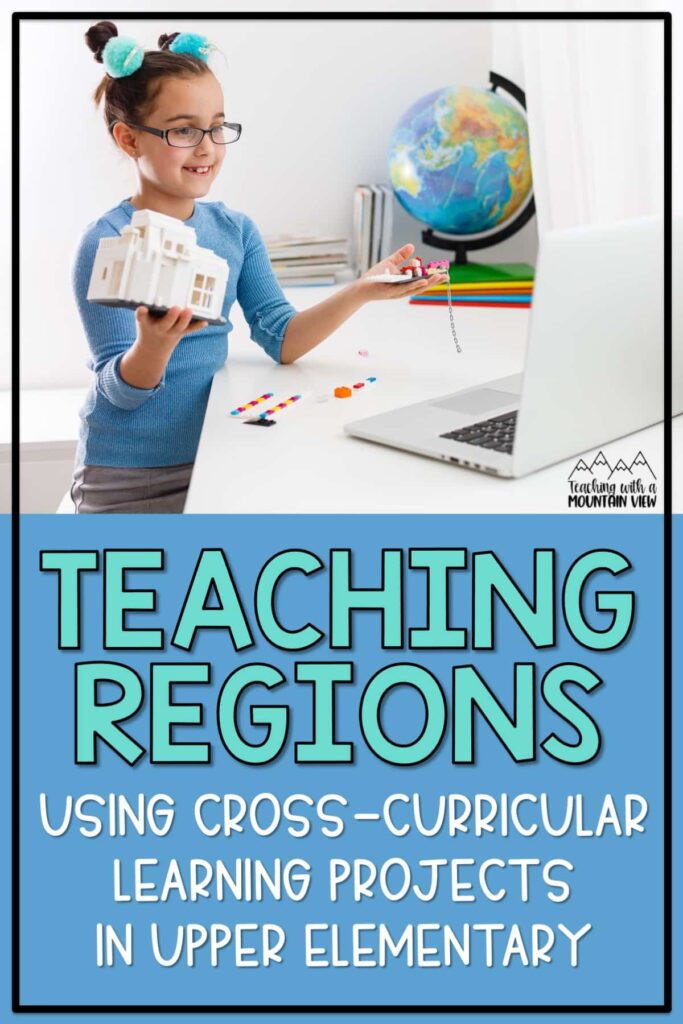
Setting The Stage for Teaching Regions
I start our unit by asking students to identify as many of the regions and states as they can to assess their current background knowledge. This Tour of the States video is a fun hook for the beginning of our unit. It’s always fun to see which states students have visited and what they think each state is known for! If you have a Flocabulary subscription, this Regions of the US activity is good too.
To further set the stage for learning, I like to do a mini room transformation. The key here is mini! Small items can really go a long way. I give each of my students a tiny suitcase and compass to set upon their desk, turn on some fun themed travel music, and off we go! Travel themed keychains, water bottle stickers, or travel themed decor are great options too (Amazon affiliate links).
Unit-Long Regions Activity Ideas
Here are a few ideas to integrate throughout your unit:
- Invite parents and community visitors from different states to share their knowledge, experiences, and mementos with your students. If you’re allowed to have food in the classroom, sampling some regional favorites is a fun part of this!
- You can also hop over to my Facebook group, Inspired in Upper Elementary, to see if there are any postcard exchanges being organized. Each year, teachers organize these exchanges where students can receive a postcard from each of 50 states!
- Flat Stanley is always a hit, no matter the age. I always LOVE seeing what we get back and all the places Flat Stanley travels.
- If you have a team of teachers, split up the duties and have the students travel from “region to region” by moving from classroom to classroom for an introduction to each region. This means you only have to prep for one or two regions and can really immerse students in your assigned region. We did this for several years in third grade, and it was AWESOME! We each created a short 10-15 minute presentation on our region to give them background knowledge before we set them off on their own to do their research.
Teaching Regions In your Literacy Block
After the regions introductions, I want to immerse my students in studying and learning about each unique region from multiple sources. While Google and safe search sites are great. sometimes I prefer to give my students a few of the sources they should be using.
I created this regions literacy unit to hit almost every single informational text standard while engaging every student (and being low-prep for you)! Whether you study the regions during your social studies curriculum or just want an amazing reading unit, this project fits the bill!
Students will embark on the trip of a lifetime as they explore the regions of the United States in a variety of ways. They’ll visit all regions of the US through magazine spreads, trading cards, conversations with travel agents, and more. Instead of only focusing on each broad region, students will also have the opportunity to dive deep into major cities and states within the regions to learn more about what makes each region unique. Then students synthesize all the information from many different sources to create a scrapbook to document their travels. You can add any of your own resources to this research as well!
It’s SO much fun and hits so many literacy skills!
Teaching Regions In your Math Block
Regions research doesn’t have to stay confined to your literacy or social studies block. I LOVE transdisciplinary learning, so any time I can intersperse math with these skills, I do! That’s why I created this regions math project.
Used alone or in combination with the literacy project, your students are going to love budgeting while planning a trip all across the United States. Students will plan a visit to nine cities across the five regions of the United States with a $2,500 budget. They must carefully spend their money and keep close track of their budget so they don’t go over. I even aligned the locations with the specific places they learn about in the literacy resource!
This project includes two versions (one for 3rd/4th and one for 5th) to make differentiation simple as students practice elapsed time, addition and subtraction with whole numbers or decimal operations, and powers of ten.
Social Studies and Science Connections
Teaching regions of the United States has obvious social studies connections, but you can also tie in science standards.
When working with a map of the United States, have students identify the physical features and natural resources of each region. Students can select different states and create newscasts to explain the climate of the region, regional events, etc.
If you have access to Google Earth, look at landscapes, landmarks, and calculate distances from popular attractions within each region. My students could explore Google Earth ALL DAY LONG.
More Cumulative Presentation Ideas
Although my project includes a cumulative scrapbook, if you’re looking for more ideas I’ve got you covered!
I’ve used several different end-of-unit projects when teaching regions. Students select their favorite state (or make a rank list, if needed) and then I group students by region for extra support as they work on their individual projects. They essentially become Expert Groups. They work as a group to become experts on their region and present their region to the rest of the class. Depending on how much time you have, you could allow students to select multiple formats, create a choice board, etc.
Travel Brochures: Similar to scrapbooks, but with more text features, these brochures should persuade readers to visit their state by highlighting its best attractions, weather, etc. They can even base their brochures off of the ones they used for research!
Region Parade: Students create parade floats out of shoeboxes that represent their state. Then group students by region and “parade” down the hallway. Invite other classes or even parents to watch.
More Ideas For Cross-Curricular Learning
If you want to learn more about engaging learning projects, I’ve shared other examples of our math and literacy projects in these posts.
Mary Montero
I’m so glad you are here. I’m a current gifted and talented teacher in a small town in Colorado, and I’ve been in education since 2009. My passion (other than my family and cookies) is for making teachers’ lives easier and classrooms more engaging.







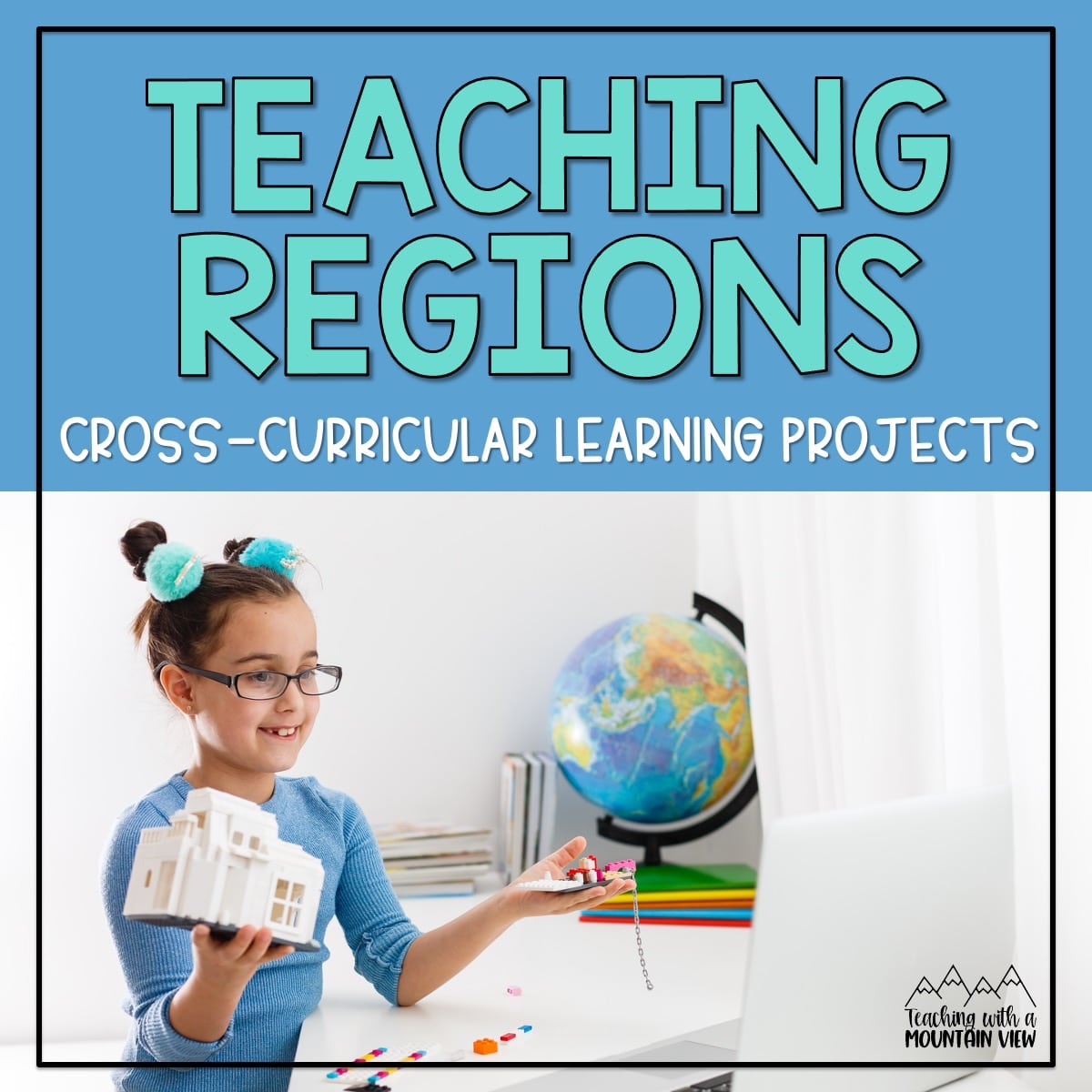
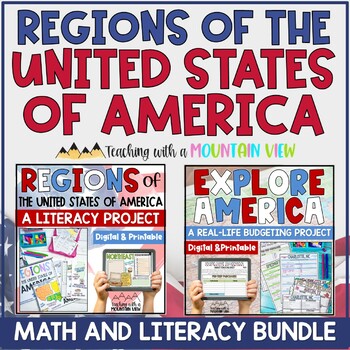
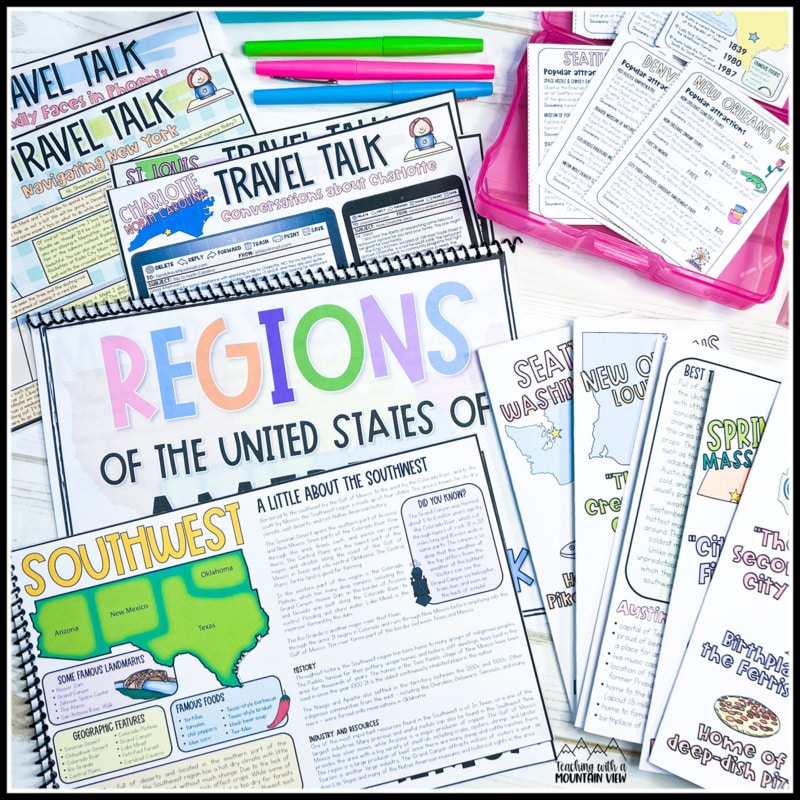
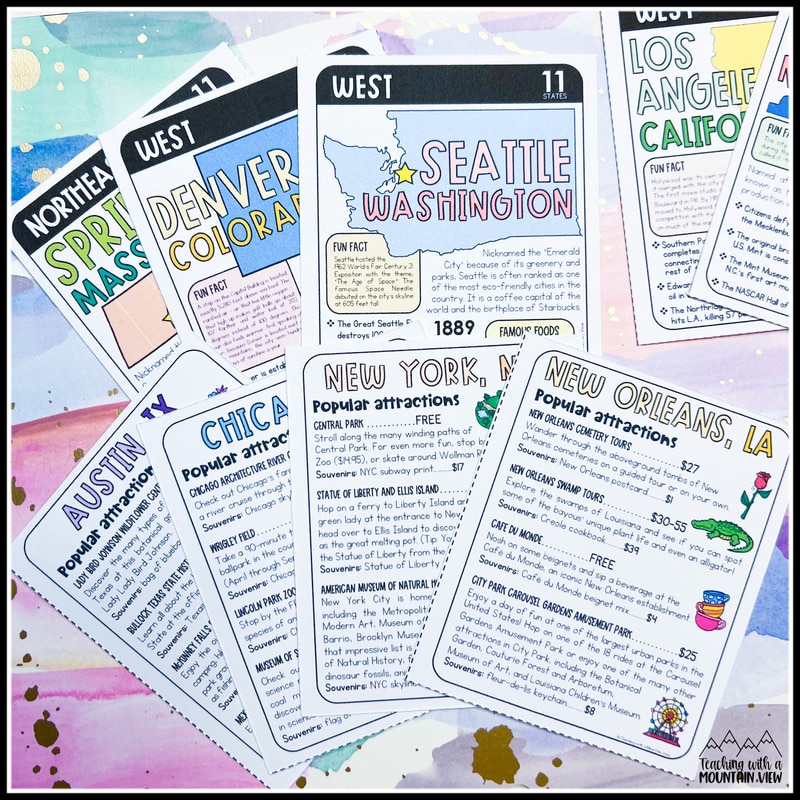
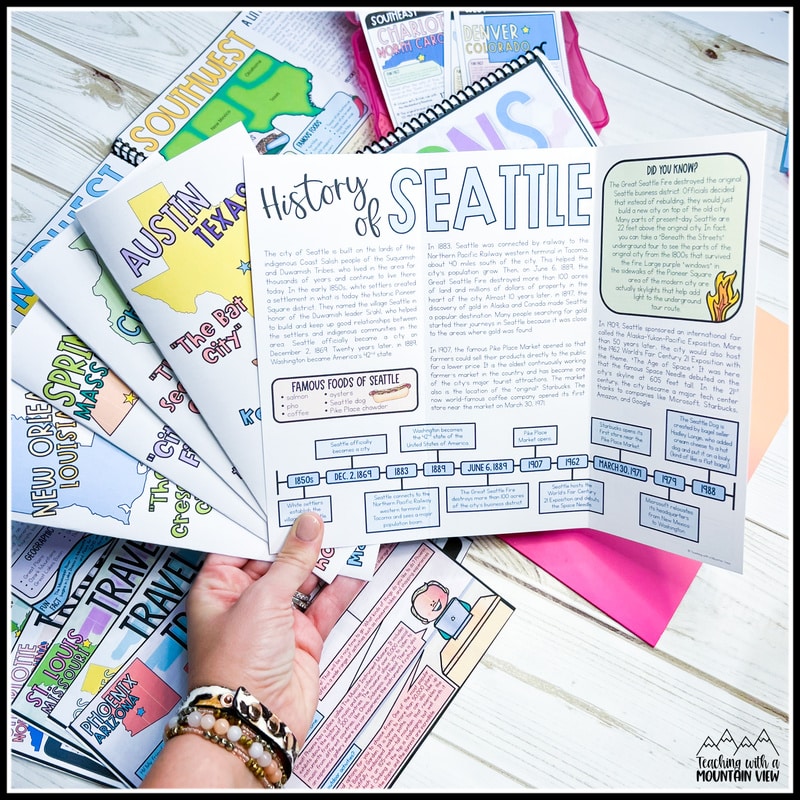
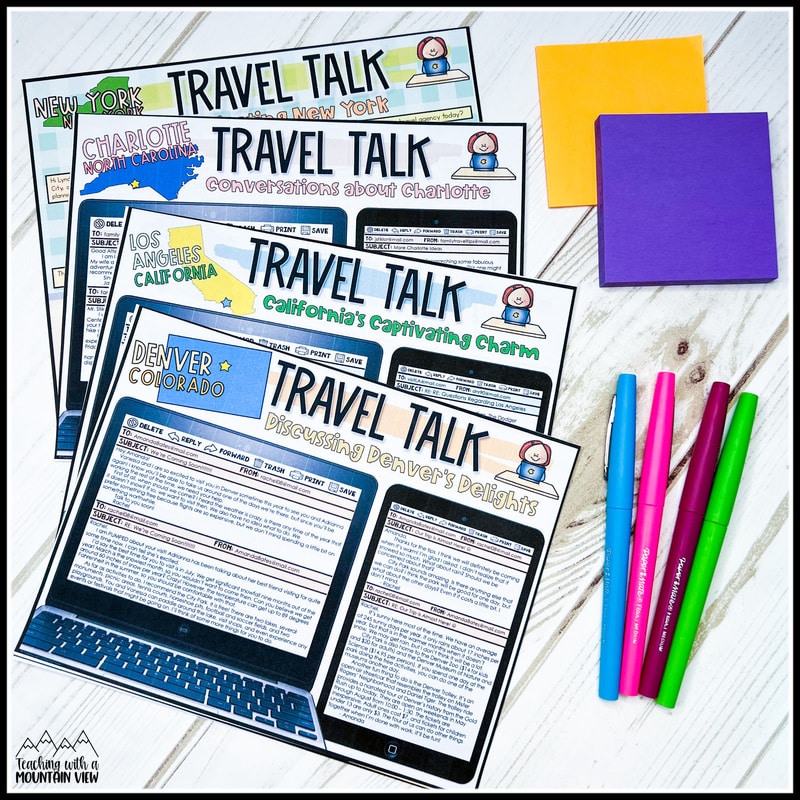
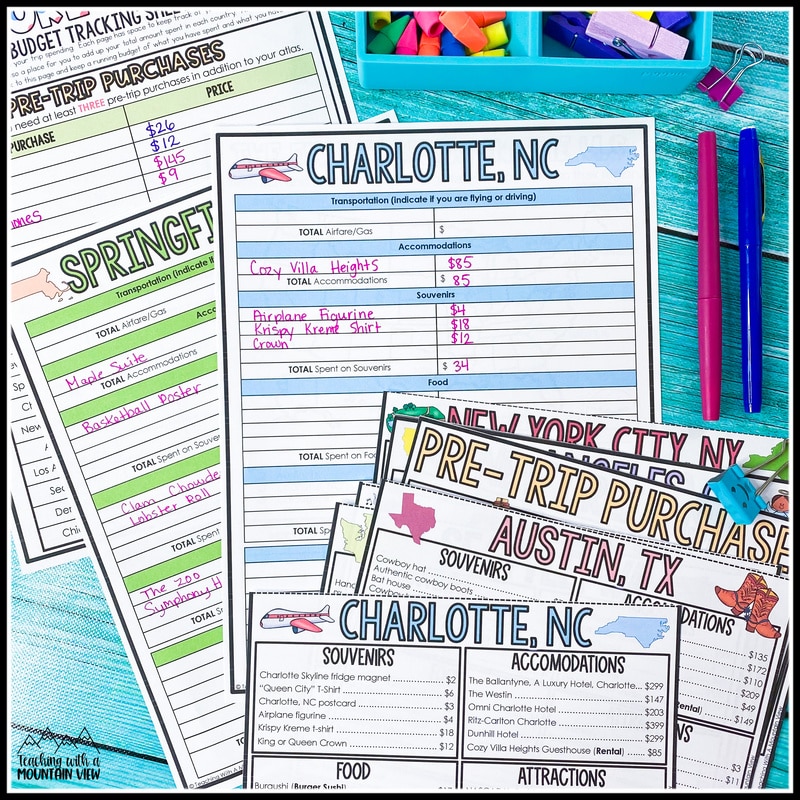
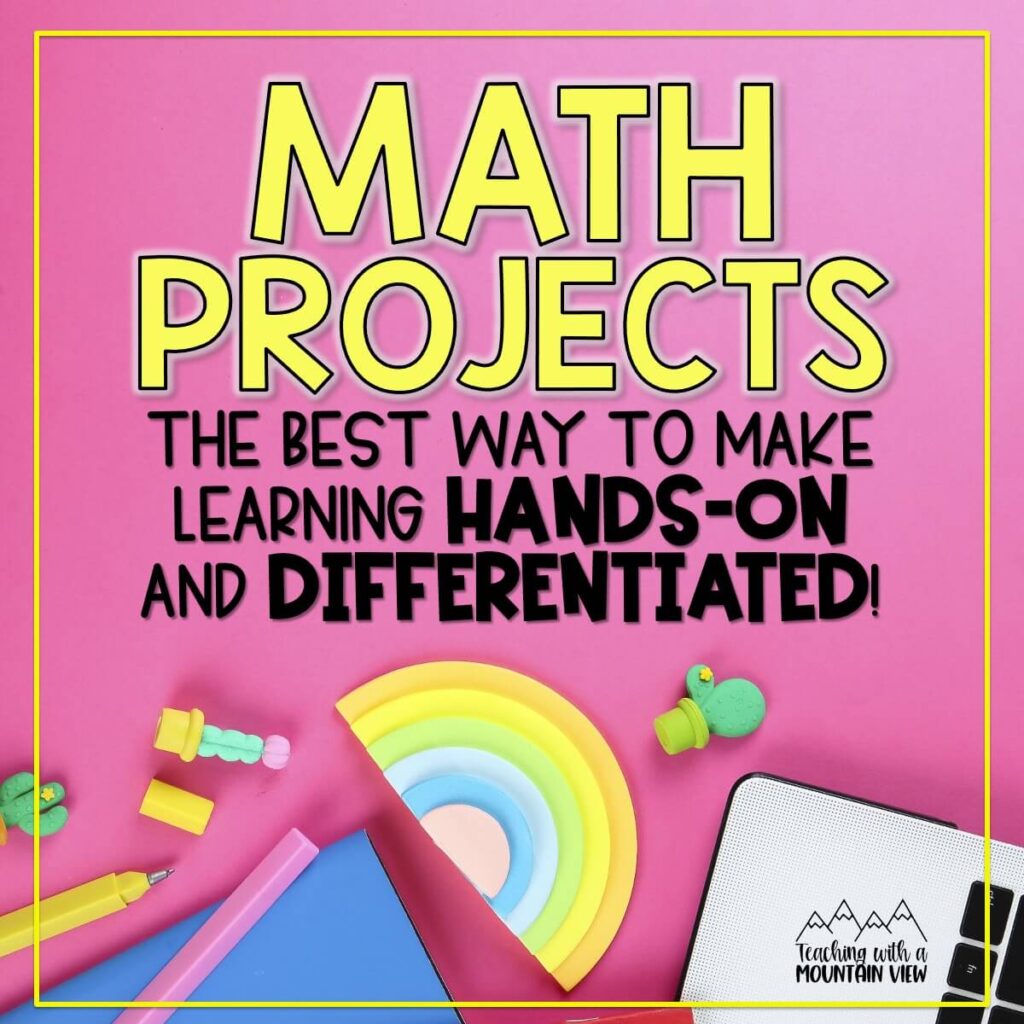






 Accountability Lessons | SEL Activities | Character Education with Picture Books
Accountability Lessons | SEL Activities | Character Education with Picture Books